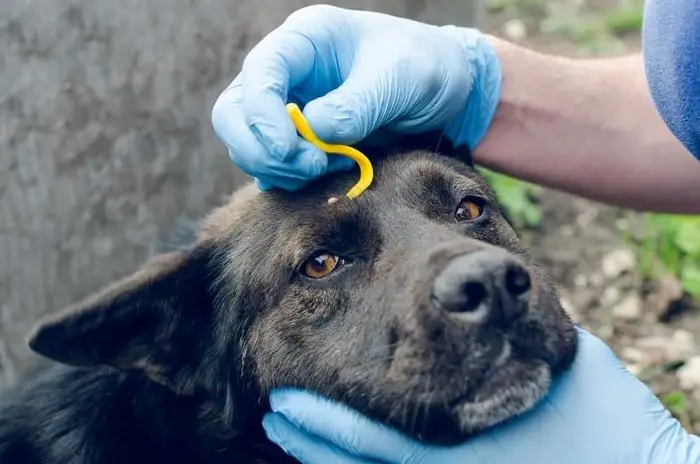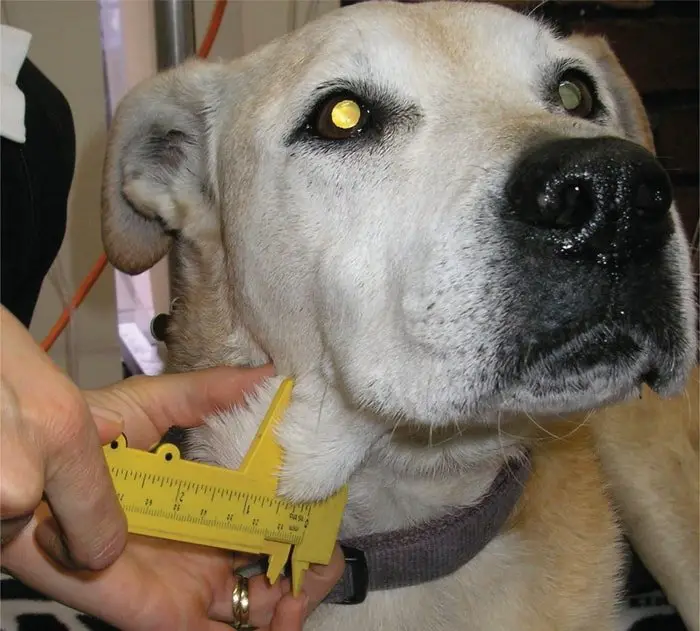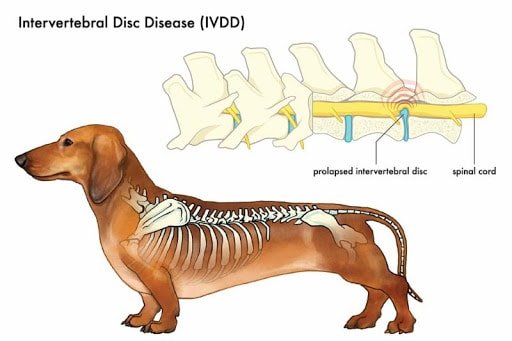As a pet owner, you must have a clear idea about the most common dog diseases for many reasons. A healthy pet is the desire of everyone. The dogs are the most popular pet animals in human society. A survey shows that 38% of American families keep one or more dogs in their house. To keep healthy and fit your dogs, you must recognize the signs of illness at the very initial days.
Dogs have many positive impacts on their owners. Dogs give companionship, influence emotional, social, and cognitive development within children, promote an active lifestyle, and even diagnose diseases. The utilization of dogs in police and security forces is recognized worldwide. There are also a few adverse effects like many diseases transmit to men from dogs. So, as an owner or handler of dogs, you must have a brief idea on common dog diseases.
What are the Diseases of Dogs?
There are hundreds of diseases in dogs, and all are not equally important. The causal agents of dog diseases are bacteria, virus, fungus, internal and external parasites, metabolic disorders, and non-infectious diseases. In my article, I shall discuss the most common 20 dog diseases for your easy understanding.

1. Kennel Cough
Kennel Cough is a very contagious respiratory infection mainly common in dogs. Kennel cough is also called bordetella or tracheobronchitis. It affects the tube of the larynx, bronchi, and trachea. The most common agent that contributes to CIRD is Bordetella bronchiseptica bacteria, canine adenovirus, parainfluenza virus, and mycoplasma. The symptoms of Kennel cough are paroxysmal harsh non-productive coughing, eye discharge, mild pyrexia, lethargy, loss of appetite. If you notice your dog might have the disease, you must isolate it from other animals and contact your veterinarian.

2. Dog Diseases: Canine Distemper
Canine Distemper is a contagious febrile and fatal disease with respiratory, gastrointestinal, and Central Nervous System (CNS). CD caused by Canine Distemper Virus (CDV). All lymphatic tissue, surface epithelium of respiratory, digestive and urogenital tract, endocrine and exocrine glands, nervous-cells of gray and white matter in the CNS and skin. The first sign of canine distemper includes coughing, sneezing, and ticks mucus coming from the eyes and nose. Lethargy, fever, depression, sudden vomiting, and diarrhea, loss of appetite are also common. Dogs with distemper should be kept in isolation to prevent infection of other dogs.

3. Ringworm in Dogs
The Ringworm is a fungal disease of the superficial layer of the skin, hair, and nails or claw. The causal agent of Ringworm is a species of Keratinophilic fungi that are Microsporum canis and Microsporum gypseum—ringworm transmitted between animals or to persons by direct or indirect contact with infected animals. The signs of ringworm in dogs are skin lesions that tend to be localized, but there are marked individual variability in the degree of inflammation and alopecia.

The classic ringworm lesions consist of a variably erythematous, circular patch of alopecia and scaling that spreads peripherally and heals centrally multiple nodules. A variable degree of ‘cigarette-ash’ like crust may form. A combination of clipping, systemic, and topical therapy is most appropriate. Localized lesions in dogs should be clipped to a margin of 5 cm to remove infected hairs, and whole-body clips should be considered if the injury is generalized.
4. Mange in Dogs
Mange in Dogs is an intrafollicular parasitic disease caused by several different species of mites, is probably the most serious non-neoplastic dermatologic condition in animals. There are two types of mange caused by different mites: Sarcoptic mange and Demodectic mange. The most common symptoms of scabies include lymph node inflammation, thickening of the skin, hair loss, bacteria, and yeast infection, extreme itching, redness and rash, anorexia, thick yellow crusts. It is crucial to control the mites. You have to need proper treatment and expert guidance when your dog is infected in mange. Treatment for both forms of mange includes hair clipping, mite eradication, and control, dipping to cleanse and heal the skin.

5. Coronavirus in Dogs
Coronavirus in dogs is highly contagious that which is associated with outbreaks of diarrhea of young dogs. Dogs of all ages are vulnerable, but the clinical disease is more likely to become apparent in puppies under six weeks of age. Canine coronavirus is transmitted among young dogs by the fecal-oral route; contamination of the environment is the primary source of exposure. Feces are described as orange in color and malodorous and may contain blood. Only in the most severe cases will dehydration and electrolyte imbalances follow. Supportive therapy is the mainstay of treatment. The prevention is both killed, and modified live CCV vaccines are currently available.

6. Cushing’s Disease in Dogs
Cushing’s disease is associated with excessive production or administration of glucocorticoids. The causes can be spontaneous or iatrogenic. The spontaneously occurring illness may be associated with inappropriate secretion of ACTH by the pituitary or associated with a primary adrenal disorder. The symptoms include increased hunger, increased thirst, obesity, loss of hair, pot-bellied abdomen. Drugs to control excessive production of cortisol at the adrenal gland include ketoconazole, metyrapone, and mitotane.

7. Heartworm in Dogs
Heartworm disease or dirofilariasis is a severe and potentially fatal disease in dogs. The worm is found in the heart and large vessels. It is caused by a Dirofilaria immitis, an internal parasite. The disease spread by the bite of a mosquito. The most common signs are soft, dry, chronic cough, shortness of breath, weakness, nervousness, listlessness, and loss of stamina: abnormal lung and heart sound. Sometimes the abdomen and legs will swell from fluid accumulation. Supportive therapy, chemotherapy, and surgical removal of heartworms are the methods of treatment. Feeding of a high level of sound quality protein and supplementing the diet with ascorbic acid and B-complex vitamins.

8. Lyme Disease in Dogs
Lyme disease is a multisystemic disorder arising from infection with the spirochete, Borrelia Burgdorferi. B burgdorferi is epizootic and transmitted by ixodid ticks by-Ixodes dammini, Ixodes pacificus, and Ixodes ricinus. Typical signs in Lyme disease are lameness, fever, anorexia, lethargy, lymphadenopathy. In lame dogs, one or more joints may be involved: the joints are swollen, hot, and painful. Other clinical signs may be seen in cloud carditis, glomerulonephritis, and neurological symptoms. Most antibiotics are useful and should be used for as long as 3-4 weeks. Vaccination with components of B. burgdorferi is now commercially available.

9. Dog Diseases: Canine Parvovirus Disease
Canine Parvovirus is a highly contagious disease in dogs. CPV-2 is the primary cause of intestinal and systemic infections of domestic dogs younger than six months of age. Most Canine Parvovirus results from exposure to contaminated feces. Equipements in veterinary clinics or kennels, insects, and rodents can serve as vectors. Signs of parvovirus are vomiting, diarrhea, anorexia, dehydration, lethargy, abdominal pain, fever. There is no specific drug available that will kill the virus in infected dogs, but supportive treatment is very useful that intended to support the dog’s body immune system. Intravenous replacement of fluid and electrolytes is the principal goal of treatment in dogs with CPV enteritis.

10. Lymphoma in Dogs
Lymphoma is one of the most common cancers, and the most common site for lymphoma is the lymph nodes. It affects the white blood cell, which circulates the blood and primarily through a particular circulatory system known as the lymphatic system. There are several forms of lymphoma: intrathoracic, generalized, gastrointestinal, skin, leukemia. The causes of lymphoma in dogs is unknown. It is suspected that the reasons are multifactorial. Painless enlargement of lymph nodes is the most common sign of lymphoma. Some non-specific symptoms include weakness, diarrhea, vomiting, loss of appetite, weight loss, difficulty breathing. Lymphoma can affect every organ system. The most effective treatment of canine lymphoma is chemotherapy. Your veterinarian suggests the type of chemotherapy depending on the type of cancer.

11. Leptospirosis in Dogs
Leptospirosis is an infectious zoonotic disease affecting both animals and man. The source of infection in the dog is usually direct or indirect contact with rodents rather than other dogs. Several serovars of Leptospira interrogans cause it, but those most often isolated are L icterohaemorrhagiae, L canicola, and L grippotyphosa. Infection is characterized by fever, muscle tenderness, vomiting, dehydration, jaundice, conjunctivitis, dyspnea. Bacteria cause the disease so it can be treated with antibiotics. Supportive treatment includes dextrose saline to combat dehydration and weight loss.

12. Dog Diseases: Conjunctivitis
Conjunctivitis is the inflammation of the conjunctiva. It is also known as pink eye or red eye. The causes include irritants -dust, wind, chemical; allergy; foreign bodies-e.g. Awned grass seeds; mechanical irritation due to adnexal disease, e.g., entropion, ectopic cilia. The symptoms include clear or green eye discharge; the whites of the eye are often red, eye areas are swollen. The treatment will depend on the cause. In this situation, your vet advises a full eye examination of your dog. As a treatment, antibiotic eyewash and antibiotic eye drop should be used.

13. Diabetes in Dogs
Diabetes is a complex chronic disease in dogs. There are two types of diabetes: Diabetes insipidus- caused by either a partial or total failure to synthesize or release vasopressin or partial or complete failure of the renal tubules to respond to vasopressin. Both forms may be congenital or acquired. The signs are polyuria, frequently with nocturia and incontinence, and severe polydipsia, anorexia, loss of weight. Successful treatment requires long-term replacement therapy using decompression, a vasopressin analog. Diabetes Mellitus: it is a heterogeneous syndrome in the dog rather than a single disease entity that is characterized by a relative or absolute deficiency of insulin secretion by the beta cells of the islets of Langerhans in the pancreas.

14. Cataract in Dogs
A cataract is any opacity within the lens. It should be differentiated from nuclear sclerosis- a standard aging change in the nucleus that appears as a spherical grey hazy area in diffuse light. The causes are inheritance, diabetes mellitus, metabolic disorder, uveitis, retinal degeneration, glaucoma. There is currently no medical therapy for cataracts. The only effective treatment is surgical removal.

15. Hookworm in Dogs
Hookworms in dogs are a life-threatening parasitic infection most common in puppies. The causative worms of the hookworm disease of dogs are Ancylostoma caninum, Ancylostoma braziliense, and Uncaria stenocephala. The disease transmitted by skin penetration, oral with feed, transmammary, and transplacental. The symptoms include enteritis and debilitating hemorrhagic diarrhea, weakness, vomiting, dehydration, weak growth, anemia, shock, and death in the most severe cases. Different types of anthelmintics drugs are used to eliminate hookworms. This type of medication is given orally, and these drugs only kill the adult worms.

16. Dog Diseases: Dog Fever
Fever in dogs is a common presenting sign of many infectious, metabolic, immune-mediated, and neoplastic disease processes manifested by increased body temperature. Most illnesses are due to transient viral or bacterial infections, which resolve spontaneously or respond to appropriate therapy. The primary causes include localized or systemic infection, immune-mediated disorder, neoplasia, a different group of diseases. The symptoms of fever are chills and shivering, headache, sweating, loss of appetite, dehydration, weakness, muscle aches. Non -steroidal anti-inflammatory drugs (NSAIDs) such as ibuprofen or aspirin can help to treat the fever in dogs.

17. Liver Disease in Dogs
One of the essential organs of the body is the liver. The liver helps with blood clotting and digestion, and it also removes toxins. Symptoms of dogs’ liver disease are vomiting, diarrhea, seizures, ascites, weakness, increased thirst, unable to walk, confusion, weight loss, loss of appetite, jaundice. The disease is caused by viruses such as hepatitis A, hepatitis B, and hepatitis C. Other causes include liver cancer, inherited disease, drugs, poisons. Treatment is depending on the purpose and severity of the condition. Antibiotics, IV fluids, ursodeoxycholic acid, and sometimes steroids may be used.

18. Dog Diseases: Tick Fever
Tick fever, also called Rocky Mountain spotted fever in dogs, is caused by Rickettsia rickettsii. This obligate, intracellular parasite is transmitted through the bite of either of two ticks: Dermacentor andersoni or D.variabilis. The signs include fever associated with myalgia/arthralgia, decreased appetite, vasculitis include edema and hyperemia of the lips, scrotum, and ears. Blood tests are essential for the disease, and if your veterinarian is suspect of this disease, then antibiotic treatment is started immediately.

19. Brucellosis in Dogs
Brucellosis is the disease of the reproductive tract, which may cause abortion in bitches, infection of the sexual organ in males, and infertility in both sexes. Bacteria produce the condition, and the bacteria that infect dogs, especially, is called Brucella canis. It is spread by contact with the semen or vaginal discharge of an infected dog or bitch, by contact with mammary secretions and aborted puppies. It can also possibly be spread by contact with urine or other body secretions. Some of the signs of canine brucellosis are swollen lymph nodes, inflammation of the epididymis prostate and testicles, lethargy, pain caused by inflammation by the sex organ, vaginal discharge. Brucella organisms are sensitive to streptomycin, aureomycin, and chloramphenicol, and they are also moderately susceptible to penicillin.

20. Dog Diseases: Intervertebral Disc Disease(IVDD)
Slipped disc or herniated disc is the condition where the cushioning disc between the vertebral bone bulge or burst into the spinal cord of a dog. This pressure on the spinal cord creates pain, nerve damage, and paralysis. German Shepherd, Basset Hound, Shih Tzu, and Dachshund dog breeds that are most prone to IVDD. The common causes of IVDD are jumping, stepping in the wrong way, hardened, or fibrous disc due to older age. Common signs are paralysis, abnormal gait, unwilling to jump, pain and weakness in hind legs, anxious behavior, crying, and loss of bowel or bladder control.

Final Remarks on Dog Diseases
Dog owners are facing frequent problems with common dog diseases. The above article highlighted only the basic features of diseases. As a dog owner, the above information will help you a lot. You can take the necessary precautions before the occurrence of diseases. If you like this piece of information, you must share it with your friends.